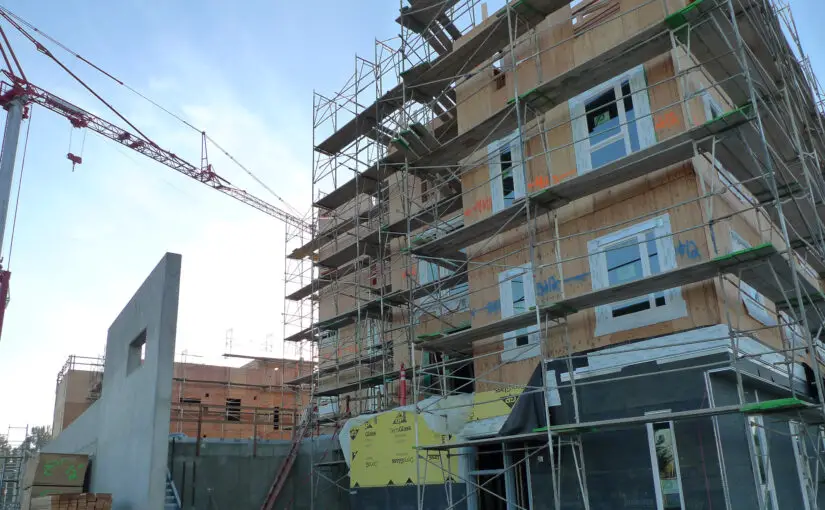A new report joins a long line of research that shows affordable housing does not drive down the value of neighboring properties. In fact, it found that affordable housing developments in Alexandria, Virginia, promoted a slight increase in their neighbors’ property values.
When new affordable housing developments are proposed in communities across the country, they almost always face some opposition from neighbors. NIMBY — or “Not In My Back Yard” — opponents often say they are concerned about more crime or the impact of more kids on local schools. They also often drive fears that apartments for low-income families would drive down local property values.
Affordable Housing Stabilizes Lives and Adds to Local Economies
The April, 2022 report from the Urban Institute points out that affordable housing benefits both individuals and communities. It helps move people out of homelessness and provides a platform for escaping poverty.
Youth living in federally assisted housing have better educational outcomes and more economic success later in life. They are also less likely to be incarcerated as adults. And affordable housing improves the health and quality of life for low-income seniors and persons with disabilities.
Affordable housing also has a positive impact on local businesses and the overall economy of an area. Low-income residents shop at local stores. More housing for low-income renters also promotes business growth and stability. Low-income renters are often less willing to travel long distances for minimum wage jobs.
Urban Institute researchers used the Zillow online assessor and real estate database to do their study for the City of Alexandria, Virginia. They looked at the relationship between the city’s affordable housing properties and sales of single-family homes, duplexes, co-ops, and condos from 2000-2020.
The research found a small, but statistically significant increase in property values for homes near affordable housing properties. Looking at the impact on immediate neighbors within about a one-block distance, property values rose by 0.09%. These positive effects on property values were also found to a lesser degree as far out as a mile from affordable housing properties.
Many market rate developments in Alexandria and other places have a few units set aside for moderate and low-income renters. There was concern that this could have skewed the results, since most tenants in these properties are moderate and upper income renters. Urban Institute researchers took these properties out of the equation in a follow-up analysis. They found that the presence of properties with mostly low-income units had an even more positive impact, with a 0.11% increase in nearby property values.
Severe Housing Cost Burden Less Common in Places with More Affordable Housing
Affordable housing developments not only add to the value of property in their neighborhoods. Low-income renters in metropolitan areas that have more federally assisted housing are less likely to be burdened by high housing costs.
The National Low-Income Housing Coalition’s annual report on the shortage of affordable housing, The Gap, determined there is a shortage of 7 million apartments affordable and available to extremely low-income renters in the U.S. These are renters with the lowest incomes, at or below 30% of the area median income.
In The Gap, NLIHC also looked at the link between affordable housing and severe housing cost burden in the 50 largest metropolitan areas in the country. Severe housing cost burden is when renters pay more than half their income for rent and utilities.
The amount of affordable housing units varied widely between the largest cities. NLIHC ranked the 50 largest cities based on how much HUD-assisted housing was available for renters with Extremely Low Incomes (ELI). HUD-assisted housing includes Public Housing, Section 8 Housing Choice Vouchers, and units with Section 8 Project-Based Rental Assistance.
The cities with the fewest HUD-assisted units for ELI renters are:
| City | Units for every 100 ELI renters |
| Las Vegas, NV | 13 |
| Riverside, CA | 18 |
| Orlando, FL | 18 |
| Houston, TX | 19 |
| Los Angeles, CA | 20 |
| Dallas, TX | 20 |
| Phoenix, AZ | 20 |
| San Diego, CA | 20 |
The cities with the highest concentration of HUD-assisted units for ELI renters are:
| City | Units for every 100 ELI renters |
| Providence, RI | 50 |
| Pittsburgh, PA | 48 |
| Boston, MA | 47 |
| Louisville, KY | 42 |
| Cleveland, OH | 41 |
| Cincinnati, OH | 41 |
At least 79% of renters with extremely low incomes in the 10 cities with the greatest shortage of HUD assisted units had a severe housing cost burden. In Las Vegas, 85% of extremely low-income renters paid more than half their income for housing. Affordable housing makes up only 4% of the Las Vegas area’s rental housing stock.
In contrast, a smaller share of extremely low-income renters had severe housing cost burden in the cities with the most HUD-assisted housing. In Providence, RI, 58% of extremely low-income renters paid more than half their income for housing. Affordable housing makes up 21% of the rental housing stock in the Providence area.
When communities invest in affordable housing they provide a lifeline to low-income renters. More affordable housing options means fewer families paying most of their income to keep a roof over their heads.
And doing right by low-income residents does not usually depress nearby property values. Affordable housing developments not only help low-income renters, they stabilize neighborhoods and boost the local economy.


